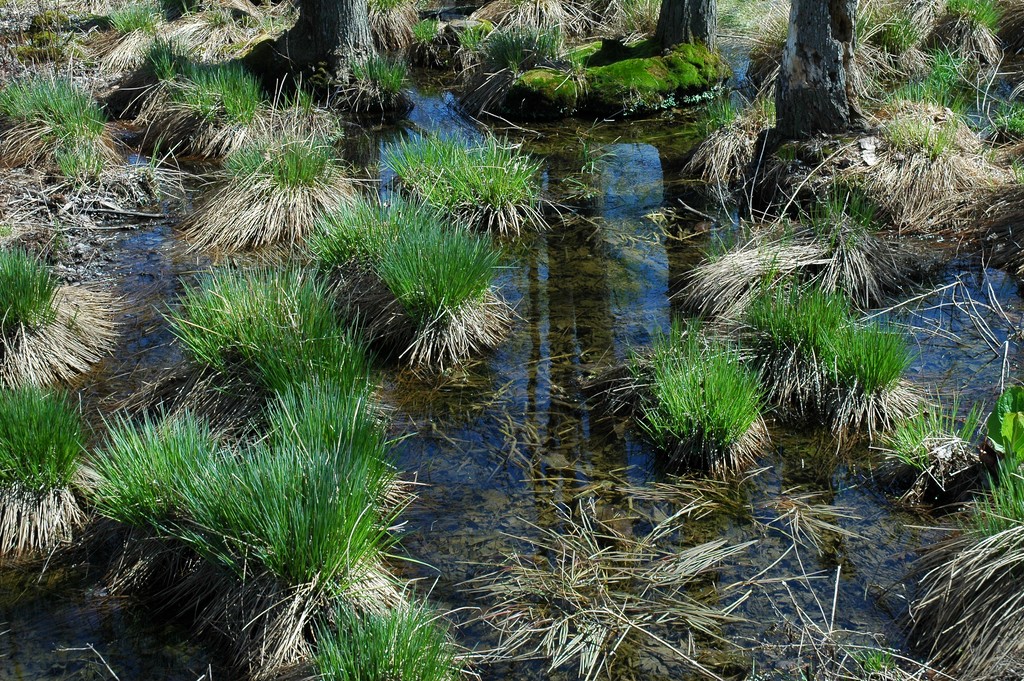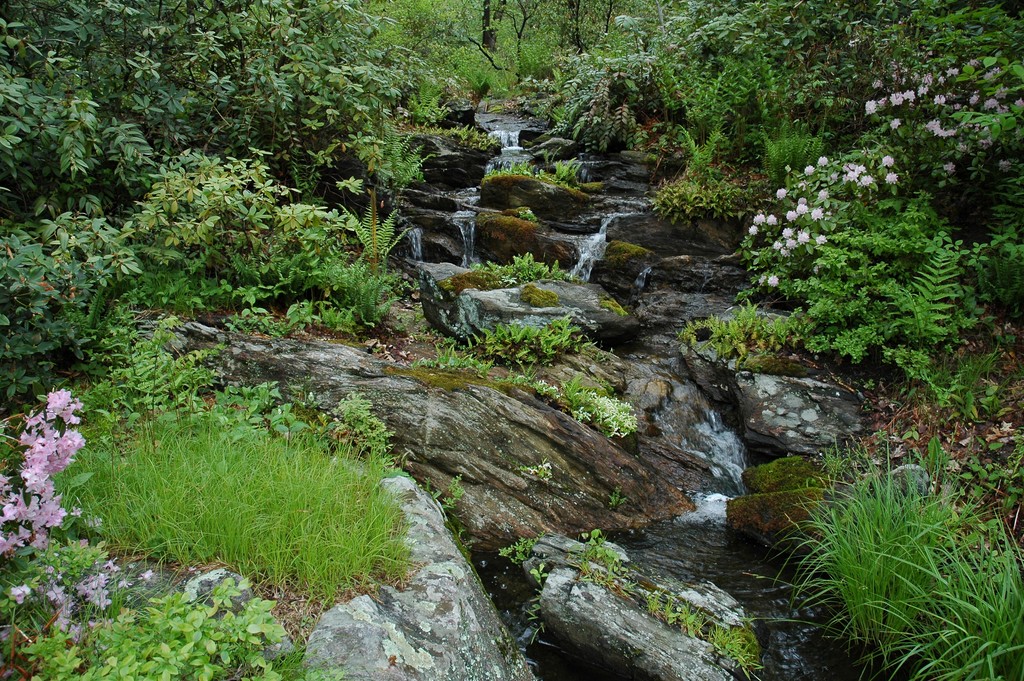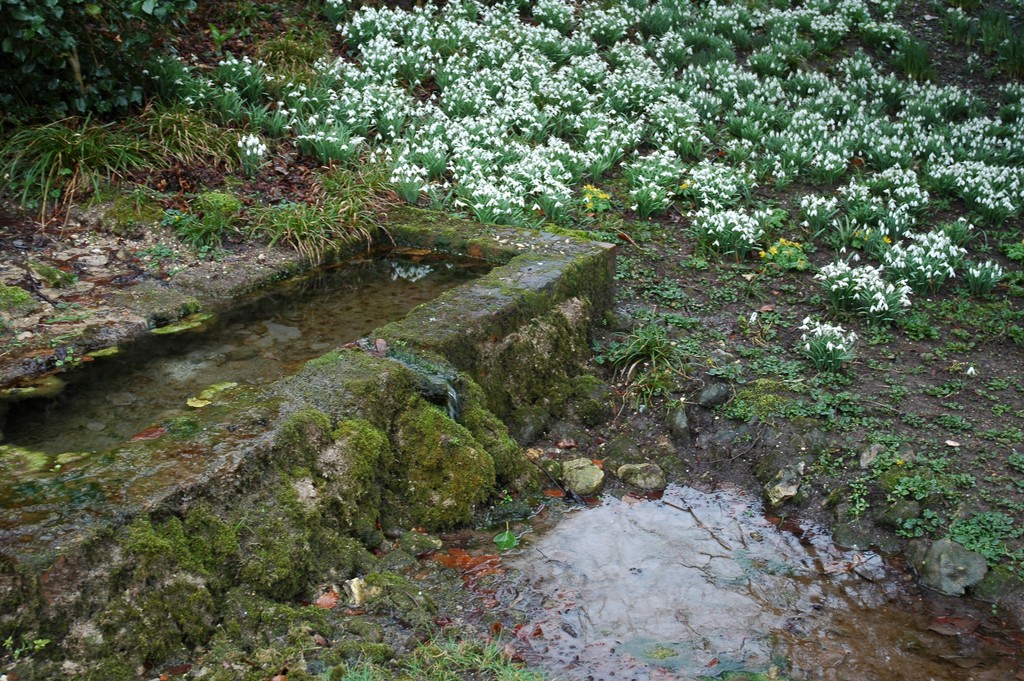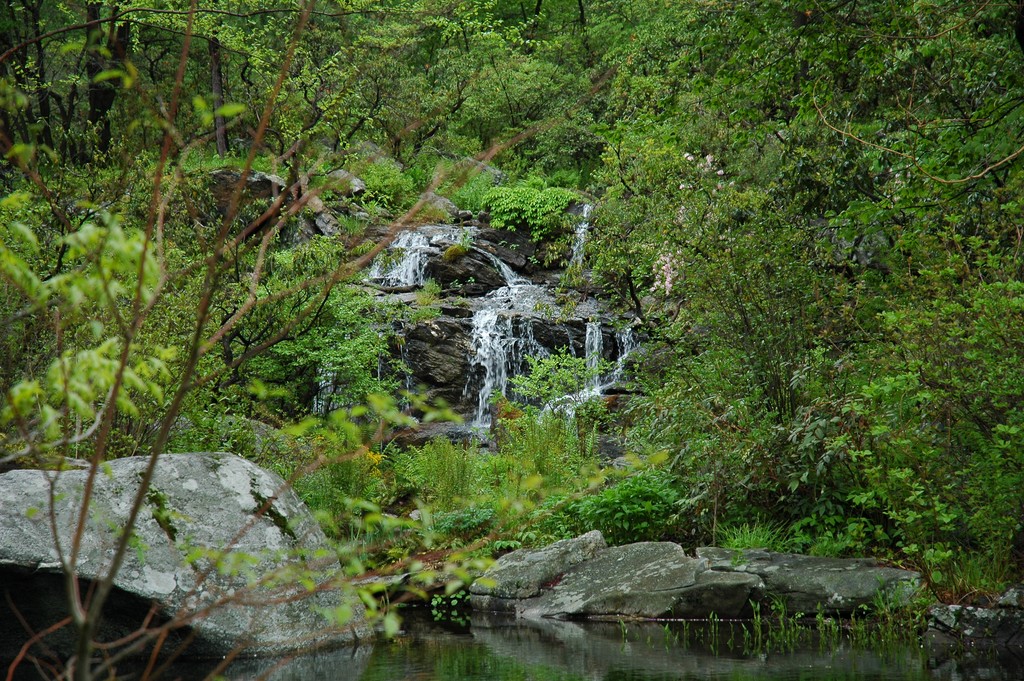Beginnings

Where do rivers start?
That’s a question that has always fascinated me, basically because I know that the Nile, the Amazon and the Thames – as majestic and life-giving as they and many of the world’s other great rivers become – all begin as mere trickles.
Indeed, with the notable exception of rivers that erupt from the ground as powerful streams, most great rivers start out as subtle emanations of water that has migrated, globule by globule, through vast areas of porous rock to emerge as tiny rivulets in zones known as “spring lines.” These spaces typically exist between ranges of hills, and the consequences of what happens so minutely at any given point along the line are really quite marvelous to behold.
Of course, many of the world’s greatest cities exist along rivers, and there are profound, natural reasons why we’ve chosen to congregate in these places and organize ourselves there. For all that, residents of these cities seldom give thought to where the water originates because it is simply there and the assumption is made that nature has found a way to get things started at some point far removed.
For my part, I differ from the typical urbanite in giving perhaps too much thought to the elemental richness of nature’s ways of getting things going. What I’ve learned provides a background that both inspires and drives my approaches to introducing water into the systems I design.
MATTERS OF DISCRETION
As watershapers, of course, we work on an infinitely smaller scale than Mother Nature, but that doesn’t relieve us of the need to find ways of adding water that neither jar the senses nor call attention to the source.
Indeed, while our tasks are small by comparison, the same basic principles apply to our work as they do to great rivers: We, too, create gathering places organized around the presence of water, and just as nature imperceptibly injects moving water into the landscape, so we, too, must think deliberately about how we add it to our own landscapes.
| Using plants to hide water-injection points is among the simplest of all available source-concealment approaches. The goal is to create a marsh-like area that functions as a water-collection area that wells up and overflows into a streambed. |
This is why I get upset when I see (as often happens) the common approach of having man-made waterways originate as torrents erupting from the tops of mountains of rock. There simply are no examples of such formations in nature, and if we want to do convincing jobs of placing water in our landscapes, we must be mindful that such approaches are implausible and strictly off limits.
Always, as I see it, water must be introduced in subtle, elegant ways so we’re not aware of the source. Unfortunately, however, I’ve seen otherwise convincing streams that disappoint because the watershaper has not considered the fundamental importance of introducing the water discreetly.
| The key to the naturalistic illusion with an overflowing source pond is starting with a small flow of water at the top of the system: You can certainly augment that flow further down in the system to create a more dramatic watercourse, but starting out as a torrent rather than a trickle calls unwanted attention to the watershaper’s role. |
Not only do watershapers need to be aware of what’s at stake in establishing headwaters for pond/stream systems: Their clients as well must be made conscious of the importance of handling this part of any project with care. Without this understanding and communication about the issues involved, clients may be left with projects that are never completely satisfactory because something is perceptibly “wrong” – even if the clients note it only on a subconscious level because their watershapes seem “unnatural.”
In traditional stream treatments, I work toward satisfying my clients (and myself) by applying any of a range of key strategies that suggest nature as the source of the water’s flow:
[ ] The simplest way to conceal the water’s source is by placing plants at the injection point. The idea here is to create an area in the garden that’s wet or marsh-like and filled with mosses, grasses, irises or rushes growing out of the water: This gives the impression that the observer has encountered a low-lying point where water gathers and then very gently issues forth into a streambed – not unlike what might be found along spring lines.In these situations, the water should not appear as a torrent flowing out of the planted area, but instead as a gentle, trickling stream. Then, if you want to create a more vigorous flow lower in the system, you’ll need to install separate injection points – hidden, say, in rockwork. It also can be useful to obscure the perimeters of these areas with taller plantings or surrounding rockwork that reach out into the broader landscape.
This is among my favorite strategies simply because it is so commonly seen in nature, particularly where streams originate in areas where there are no dramatic hills or mountains. The Thames, for example, starts in just this way as the gradual outflow from wet meadows (lush with watercress, rushes and marsh marigolds) that feed the streams at its headwaters.
A similar approach involves creating a pond without emergent plants: Here, the bottom is covered in pebbles and larger rocks and then brims over the edge of the pond to enter into a stream’s course. These ponds can be very shallow or a few feet deep: Either way, you’re creating an area that gives the impression that the source is a spring or that the pond is a collecting point for runoff from somewhat higher ground.
In these approaches, it’s enormously helpful to have an increase in elevation behind the pond, because, as we know, water in nature always flows downhill: It’s simply unrealistic to ask anyone to believe that a pond can form at the highest point!
| Originating streams through clefts or fissures in rock faces is another naturalistic approach. This makes it seem as though the water is being pressed through whatever gaps it can find in a rock face by a natural spring or other hydrological forces. |
This approach can be very complex, consisting of multiple points where water emerges from a variety of rock structures to gather as a pool below. Further interest can be added by diverting the water into multiple cascades as the pool brims over into the stream before coalescing as a single flow.
[ ] If your design calls for just one source of water, this can be achieved effectively by having the water emerge from a small cave or chasm in some large rockwork formation at the headwaters. This configuration is often seen in nature, particularly in areas dominated by limestone: As is widely known, water has the ability to carve out caves; indeed, people exploring natural caves very often will encounter large flows or bodies of underground water.| In some cases, a single source of water can work if you have it emerge from some sort of cave or break in a large rock structure. Indeed, this form is often found in nature, where natural springs form caves or underground streams break through to the surface. |
Many projects add water to the system by means of a waterfall at the top of the stream. This approach can be very effective if your intent is to make a strong visual statement that will draw the eye to the top of the stream course. The problem, as stated above, is that nowhere in nature do we see large flows of water erupting like volcanoes from the tops of geological formations.
As a consequence, it’s absolutely essential in this approach to create a backdrop for the waterfall with both plants and stones. The idea here is to create the impression that the water originates a considerable distance behind the falls, which means that you must have both a vertical rise behind the falls and space enough to create a scene that creates a sense of mystery while visually concealing the water’s source.
More so than with some of the other possible approaches, you have to be cunning in how you create the impression that a stream extends for some great distance behind the waterfall. If the observer looks up to see a fence or a building directly behind the waterfall, you’ve broken the illusion and announced that the scene is artificial.
[ ] As we all know, many properties have distinct visual boundaries and are enclosed to such an extent that there’s virtually no way for water to form a stream or pond in any kind of natural way within their boundaries. In these situations, many times I’ve created the illusion that a stream flows right through the yard, from one side to the other: Where it emanates from and where it flows to are anyone’s guess – far distant and unknown!| On properties where there are clear visual boundaries, it’s possible to create credible flows by establishing architectural or even municipal sources for the water, as with a culvert seemingly penetrating a wall to continue a flow that starts at some unknown point beyond. |
These are cases in which it often works best to reveal a human role by, for example, installing some type of culvert or pipe that looks as though it had been installed by the municipality decades or even generations past. Here, the water emerges from the artificial opening at one boundary, then flows in its natural-stream state through the property before disappearing again at the far boundary.
Along the stream, you can create areas where the water widens out and is edged with emergent plants and stone – but then narrows again on its way out of the property, disappearing into another culvert or some other contrived outflow. (While it appears that the water exits the property at this point, it is in fact being re-circulated.)
In these designs, I’ve found it very effective to use stressed material, such as used old brick or rusted, cast-iron pipe – thus giving the impression that the devices used to control the water had themselves been there for decades and are now degrading.
IMPRESSION AND SCALE
In all of these approaches, it’s extremely important to keep in mind matters of scale. A common mistake is to create water flows that are too aggressive and voluminous relative to the size of the rockwork and the overall space.
As a rule, I say it’s always better to be happy with a small flow of water interacting with large rocks rather than the other way around – and this is especially important when considering where the water begins: As mentioned at the outset, rivers and streams always begin with a trickle, which means you can devise far more convincing effects by downsizing the amount of water flowing from a source. The larger and more active the flow, the harder one must work to make it seem plausible.
|
Opting Out There are, of course, projects in small spaces where you have no chance at all to conceal the water’s source with anything approaching the level of naturalistic discretion I advocate throughout the accompanying text.. In these cases, the best option is to use an obvious, clearly artificial device: We all know, after all, that water is unlikely to emerge naturally in the middle of the patio or a pool deck, so why work against nature and the setting by trying to generate a “naturalistic” effect that is doomed from the start to look artificial? Why not use traditional fountains or other artificial devices to add water to these scenes? You can even blend the artificial with the natural if you’re thoughtful about it. For instance, I once created a scene in which water emerged from a pair of large terracotta jugs located on a terrace, flowed a short distance and then disappeared into an area of small stones and grasses. I then created a visual break with a dry, stone-strewn streambed and, several feet away, concealed a second injection point with plants and developed a convincingly natural stream. Depending on the situation, this sort of visual sleight of hand is always possible – but you must be clear in your own thinking and convey those ideas to the client. A.A.W. |
It’s truly a case of less is more: When working with relatively small flows, you give yourself access to greater sets of believable design options.
When I devise my hydraulic systems, I also make certain the water can be turned up or down to adjust the flow. More often than not, as we adjust the flow when a system is initiated, clients find – especially at the headwaters – that they prefer subtle, gentle flows because they are both more believable and more relaxing.
None of this is to say that exuberant water is undesirable: Indeed, my point is that such flows are almost always more believable at points lower in the system, as though the stream is gaining in velocity and volume as it descends – which again is something that happens in nature. In these situations, I’m a big proponent of augmenting flows downstream, concealing the injection points beneath rocks, plants or even small bridges.
| Issues of scale truly matter in creating credibly naturalistic flows, which is why I favor using large rock and small volumes of water. Yes, you can add water downstream to create exuberant effects, but at the source, the larger the flow, the harder you need to work to make a scene convincing. |
I first started down this path in the 1970s with a project in the south of France: The stream began in an arid forest area with a tiny rivulet emerging from beneath a rock, as might happen with a natural stream. At the bottom of the system, where the slope dropped quite dramatically, the clients wanted a vigorous flow in the form of a waterfall tumbling over a grotto in which their children could play.
In this case, I set up a half-dozen injection points along the course of the stream. By the time the water reached the bottom, the flow had been enhanced by 20 times beyond the level found up on top. By increasing the width of the streambed (and also dividing and recombining flows at various vertical transitions), the fact that the water was being augmented was not obviously apparent: All an observer senses is that the water becomes louder, more vigorous and more complex as it accelerates down the slope.
THE FLIP SIDE
While it’s natural and believable to create systems that grow in vigor and volume as they descend a slope, there are also going to be situations where you’ll want to slow the system down to create rhythms and contrasts between active and quiet points along the water’s course.
One simple way to achieve this is to widen the streambed so the energy is dispersed. Again, we see this in nature all the time as water widens into pond areas and slows considerably. That’s simple enough, but the challenge can be more difficult when you want to have quiet water at the bottom of a large, high-volume waterfall.
| It’s easy to add volume to stream systems once the water has issued with some modesty at the top of its course. This, however, often leaves you to slow down the flow at the system’s base to create a tranquil, terminal pond – an effect that can be achieved by widening the stream or, as seen here, by placing rockwork at the foot of the falls to dissipate the water’s energy. |
Here, I take a page from nature’s book and replicate the way many big waterfalls behave at their bases. In most cases, these cascades scour out deep catch basins at the foot of their falls – and just beyond you’ll see heaps of rocks that have been washed downstream by torrential flows. (Perhaps the most familiar example of this is Niagara Falls, where the rock material had accumulated to such an extent by the late 1960s that the river had to be diverted while stones were cleared away to preserve the falls’ majestic sheeting effects.)
You can use this strategy in your own systems by creating a zone of rock formations at the base of large waterfalls. In this way, the energy of the falling water is contained at the foot of the falls and is dissipated as the water snakes its way through gaps and convolutions in the rocks, dividing and thereby slowing down.
Of course, one needs to avoid making these structures look like dams! I do it by using rocks that emerge from the water as islands or have them extend from the sides of the stream as though the water has carved a path through some geological formation. I also use rocks that appear to have broken off upstream and tumbled their way down the falls to lodge strategically in place. However you work this effect, the goal is to create a breakwater that will dissipate the wave action and allow the water to flow more gently into the pond beyond the falls.
|
Gaining Strength Systems in which water is gradually added to a watercourse as it moves down a slope require fairly complex hydraulic approaches. In a typical scenario, I’ll install the pump or pumps at the bottom of the system to push water back up the hill. The simplest system would requitre one pump feeding a manifold from which a number of different pipes would distribute water to different parts of the stream. This requires careful pump selection and pipe sizing to make certain the system will run as efficiently as possible. A run, for example, that leads to the very top of the system may not require a great volume of water compared to the lower injection points – but will require more pressure. This makes it particularly important to understand friction losses and feet of head pressure in what can be very long runs. When in doubt, always consider upsizing the plumbing! In this sense, what we do with naturalistic streams is similar to what swimming pool and fountain builders do in pump sizing and pipe selection. In my designs, for example, I carefully determine the desired flow at each injection point and then refer to pump-performance and pipe-friction charts to decide what pump and pipe will create the most efficient system. With multiple injection points, it’s also important that each run be controlled by a valve that allows for adjustment of flows once the system is up and running. In many cases, including a project I’m currently pursuing in Montecito, Calif., we’ve used multiple pumps to meet system requirements – and it makes sense given the scale. In this specific case, the water moving to the top involves little volume but unusually high pressure because of the distance and height difference between the bottom pond and the headwaters. By contrast, the lower injection points require much less pressure but much greater volume, so the call here was to install multiple pumps, with the top two or three injection points (about halfway down) on one high-pressure/low-volume pump and return manifold and two lower sets of injection points handled with energy-efficient, high-volume/low-pressure pumps. In systems in which the differentials in flow and pressure requirements are more even, you can, of course, get by with a single pump. On large systems with big elevation differences, however, it is sometimes more economical to lift water in stages by pumping from the bottom pond to the next one up the slope and then the next one, and so on until you reach the headwaters. Understand what you’re asking the system to do – and specify equipment accordingly, because energy efficiency is a growing concern and even the wealthiest of clients will blanch these days at the thought of needlessly squandering electricity! A.A.W. |
Clearly, there are numerous strategies for adding water to a system and managing the way it flows. I’ve covered a few here in words and images, and if I might offer some final words of advice, let me suggest that all of us benefit from thinking imaginatively about how water is injected into our systems. Think big! We have the opportunity to create all the wonderful complexities found where water emerges and forces its irresistible way into the landscape.
If the situation allows it, you’ll always be better off exploring multiple ways to add water to a stream complex, basically because nature has found all the ways you might think of – and a few more for good measure. And consider that there’s nothing wrong with starting at the top with one approach (perhaps a small flow welling up in a bog?) and then, downstream, adding more water through fissures in rocks and somewhere else with water flowing out of a small cave.
In all cases, nature is the point of reference when it comes to managing water flow. Not to oversimplify things (because these issues can be marvelously complex), but the great advantage we all have is that nature provides us with infinitely beautiful examples: If we take the time to see for ourselves where streams and rivers begin, we’ll always find strategies we can apply.
Every river starts somewhere: When you seek the source, both literally and figuratively, you’re certain to find ways that will help you create works that are believable – and immensely satisfying.
Anthony Archer Wills is a landscape artist, master watergardener and author based in Copake Falls, N.Y. Growing up close to a lake on his parents’ farm in southern England, he was raised with a deep appreciation for water and nature – a respect he developed further at Summerfield’s School, a campus abundant in springs, streams and ponds. He began his own aquatic nursery and pond-construction business in the early 1960s,work that resulted in the development of new approaches to the construction of ponds and streams using concrete and flexible liners. The Agricultural Training Board and British Association of Landscape Industries subsequently invited him to train landscape companies in techniques that are now included in textbooks and used throughout the world. Archer Wills tackles projects worldwide and has taught regularly at Chelsea Physic Garden, Inchbald School of Design, Plumpton College and Kew Gardens. He has also lectured at the New York Botanical Garden and at the universities of Miami, Cambridge, York and Durham as well as for the Association of Professional Landscape Designers and the Philosophical Society. He is a 2008 recipient of The Joseph McCloskey Prize for Outstanding Achievement in the Art & Craft of Watershaping.























